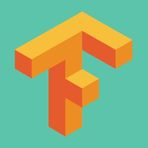The Race to Optimize Large Language Models: Techniques and Innovations
February 6, 2025, 12:04 pm
In the world of artificial intelligence, large language models (LLMs) are the titans. They are powerful, but they come with a hefty price tag—both in terms of computational resources and time. As these models grow, so does the need for speed. The quest for faster inference has become a hot topic among researchers and developers. This article explores the latest techniques to accelerate LLMs, drawing insights from recent advancements.
The first step in this journey is understanding the challenges. LLMs, like the ones developed by Yandex, are complex beasts. They require immense computational power, often running on specialized hardware. The inference process—the stage where the model generates output based on input—can be sluggish. This sluggishness can hinder real-time applications, making it essential to find ways to speed things up.
One of the most promising techniques is model distillation. Think of it as a teacher-student relationship. The larger model, the teacher, imparts knowledge to a smaller, more agile model, the student. This process retains much of the teacher's capabilities while significantly reducing the computational load. The benefits are clear: smaller models require less memory and can operate efficiently on edge devices.
Distillation comes in various flavors. Hard-label distillation is the simplest. The teacher generates a dataset of input-output pairs, and the student learns to mimic these outputs. It’s like a child learning to speak by repeating what they hear. However, this method can be limiting. It doesn’t capture the nuances of the teacher’s understanding.
Enter soft-label distillation. This approach allows the student to access the teacher's internal probability distributions, not just the final answers. It’s akin to a student learning not just the correct answers but also the reasoning behind them. This method provides richer training signals, leading to better performance. However, it demands more computational resources during training, making it a balancing act between efficiency and effectiveness.
On-policy distillation takes this a step further. It addresses a common pitfall known as exposure bias. In traditional distillation, the student learns solely from the teacher's outputs. On-policy distillation introduces a feedback loop where the student generates its outputs, which the teacher then evaluates. This iterative process mimics real-world learning, allowing the student to refine its strategies over time.
But distillation is just one piece of the puzzle. Quantization is another powerful tool in the optimization toolkit. This technique reduces the precision of the model's weights and activations, leading to faster computations. For instance, converting floating-point weights to integer formats can significantly enhance speed without sacrificing much accuracy. The challenge lies in managing outliers during this process, which can skew results. Recent innovations, such as FP8 quantization, have shown promise in maintaining quality while achieving substantial speed-ups.
Moreover, speculative decoding and continuous batching are emerging as effective strategies. Speculative decoding allows the model to predict multiple tokens simultaneously, rather than one at a time. This parallelism can drastically reduce response times. Continuous batching, on the other hand, processes multiple requests in a single batch, optimizing resource usage and minimizing idle time.
The versatility of these techniques is noteworthy. They can be combined in various ways to achieve optimal results. For instance, a model could undergo distillation and quantization simultaneously, reaping the benefits of both approaches. This flexibility is crucial as developers seek tailored solutions for specific applications.
As we look to the future, the landscape of LLM optimization is rapidly evolving. New architectures, such as Mixture of Experts (MoE), are gaining traction. These models dynamically allocate resources, activating only the necessary components for a given task. This approach not only enhances efficiency but also reduces the overall computational burden.
The open-source community plays a vital role in this optimization race. Projects like a lightweight GPT-2 implementation in C demonstrate that even simpler models can be optimized for speed. By stripping down unnecessary dependencies and focusing on core functionalities, developers can create efficient alternatives that run on standard hardware. This democratization of technology allows more individuals and organizations to harness the power of LLMs without the need for extensive resources.
In conclusion, the race to optimize large language models is a multifaceted endeavor. Techniques like distillation, quantization, and innovative architectures are paving the way for faster, more efficient AI. As these models become more accessible, the potential applications are limitless. From real-time chatbots to advanced content generation, the future of LLMs is bright. The journey continues, and with each advancement, we move closer to unlocking the full potential of artificial intelligence.
The first step in this journey is understanding the challenges. LLMs, like the ones developed by Yandex, are complex beasts. They require immense computational power, often running on specialized hardware. The inference process—the stage where the model generates output based on input—can be sluggish. This sluggishness can hinder real-time applications, making it essential to find ways to speed things up.
One of the most promising techniques is model distillation. Think of it as a teacher-student relationship. The larger model, the teacher, imparts knowledge to a smaller, more agile model, the student. This process retains much of the teacher's capabilities while significantly reducing the computational load. The benefits are clear: smaller models require less memory and can operate efficiently on edge devices.
Distillation comes in various flavors. Hard-label distillation is the simplest. The teacher generates a dataset of input-output pairs, and the student learns to mimic these outputs. It’s like a child learning to speak by repeating what they hear. However, this method can be limiting. It doesn’t capture the nuances of the teacher’s understanding.
Enter soft-label distillation. This approach allows the student to access the teacher's internal probability distributions, not just the final answers. It’s akin to a student learning not just the correct answers but also the reasoning behind them. This method provides richer training signals, leading to better performance. However, it demands more computational resources during training, making it a balancing act between efficiency and effectiveness.
On-policy distillation takes this a step further. It addresses a common pitfall known as exposure bias. In traditional distillation, the student learns solely from the teacher's outputs. On-policy distillation introduces a feedback loop where the student generates its outputs, which the teacher then evaluates. This iterative process mimics real-world learning, allowing the student to refine its strategies over time.
But distillation is just one piece of the puzzle. Quantization is another powerful tool in the optimization toolkit. This technique reduces the precision of the model's weights and activations, leading to faster computations. For instance, converting floating-point weights to integer formats can significantly enhance speed without sacrificing much accuracy. The challenge lies in managing outliers during this process, which can skew results. Recent innovations, such as FP8 quantization, have shown promise in maintaining quality while achieving substantial speed-ups.
Moreover, speculative decoding and continuous batching are emerging as effective strategies. Speculative decoding allows the model to predict multiple tokens simultaneously, rather than one at a time. This parallelism can drastically reduce response times. Continuous batching, on the other hand, processes multiple requests in a single batch, optimizing resource usage and minimizing idle time.
The versatility of these techniques is noteworthy. They can be combined in various ways to achieve optimal results. For instance, a model could undergo distillation and quantization simultaneously, reaping the benefits of both approaches. This flexibility is crucial as developers seek tailored solutions for specific applications.
As we look to the future, the landscape of LLM optimization is rapidly evolving. New architectures, such as Mixture of Experts (MoE), are gaining traction. These models dynamically allocate resources, activating only the necessary components for a given task. This approach not only enhances efficiency but also reduces the overall computational burden.
The open-source community plays a vital role in this optimization race. Projects like a lightweight GPT-2 implementation in C demonstrate that even simpler models can be optimized for speed. By stripping down unnecessary dependencies and focusing on core functionalities, developers can create efficient alternatives that run on standard hardware. This democratization of technology allows more individuals and organizations to harness the power of LLMs without the need for extensive resources.
In conclusion, the race to optimize large language models is a multifaceted endeavor. Techniques like distillation, quantization, and innovative architectures are paving the way for faster, more efficient AI. As these models become more accessible, the potential applications are limitless. From real-time chatbots to advanced content generation, the future of LLMs is bright. The journey continues, and with each advancement, we move closer to unlocking the full potential of artificial intelligence.

